Religion: Jewish Law
Law in Israel
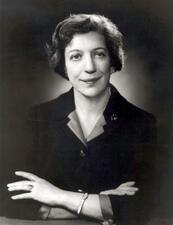
Law in the United States

Leaders in Israel's Religious Communities
Since the late twentieth century, Israeli women have begun to assume leadership positions that are undoubtedly “religious” in both content and form. In the Reform and Conservative movements, gender equality has existed for decades, while in the most traditional ultra-Orthodox societies distinctive female religious leadership exists only within halakhic constraints. In modern Orthodoxy, measured changes have led to significant changes over the years and a new generation of religious leadership.
Leadership and Authority
Legal-Religious Status of the Female According to Age
Legal status in Judaism is determined by age, sex, legal capacity, and, to some extent, by class and societal status. Legal majority in Jewish law was achieved relatively early in comparison to contemporary standards.
Legal-Religious Status of the Jewish Female
Gendered language in the Torah resulted in centuries of debate about a woman’s role with regard to commandments. The sages’ construction of a woman and her values was very negative, probably relating more to their vision of the ideal, which was male oriented, and applying its opposite to females.
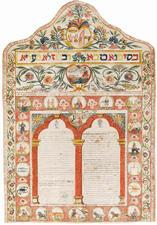
Legal-Religious Status of the Married Woman
Rabbinic law defines the criteria and requirements for traditional marriage, marital rights, and divorce. However, the rabbinic marital system poses many problematic issues for women, especially for agunot, women trapped against their will in marriages by their husbands.
Legal-Religious Status of the Moredet (Rebellious Wife)
A woman who is deemed a moredet is severely disadvantaged in her legal standing. There are various ways in which a women is considered a moredet, and all legal processes dealing with rebellious wives put women at a legal disadvantage.
Legal-Religious Status of the Suspected Adulteress (Sotah)
Legal-Religious Status of the Virgin
Virginity has long remained a significant feature of womanhood in Judaism. Many foundational Jewish texts detail the specifics of virginity, explaining the requirements of virginity and to what extent these requirements can be expanded.
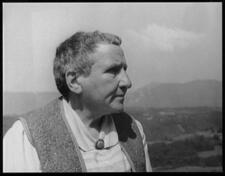
Lesbianism
Lesbians and women’s same gender-loving has a long history in Jewish life, dating back to ancient times. Since the 1980s, particularly in the United States, Jewish lesbian thinking and activism has become a part of all facets of Jewish life.
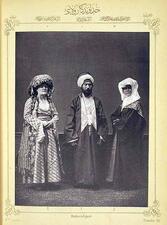
Levant: Women in the Jewish Communities after the Ottoman Conquest of 1517
Following their expulsion from the Iberian Peninsula in 1492, many Jews settled in Palestine, Egypt, and Syria – regions which fell under Ottoman Control in 1517. Girls in the Levant were married at young ages, polygamy was common, and obtaining a get was very difficult. Nevertheless, many Jewish women worked outside the home and kept their earnings.
Maimonides
Maimonides, referred to by the acronym Rambam, was a medieval Sephardic Jewish sage who studied medicine and practiced as a physician throughout his lifetime. His legal and philosophical writings made him one of the greatest and most widely read medieval Jewish philosophers.
Marriage in Halakhic Judaism

Mikveh
The mikveh is a ritual bath prescribed by ancient Jewish law for the rite of purification. It had particular significance for Jewish women, who were required to immerse themselves in the mikveh following their menstrual periods or after childbirth in order to become ritually pure and permitted to resume sexual activity. The practice has been jettisoned by many Jews but continues to be observed today, not only in Orthodox communities but also by feminists, queer Jews, and others who have reinterpreted the ritual.
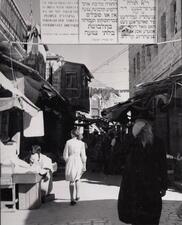
Modesty and Sexuality in Halakhic Literature
Though it is not mentioned in the Bible, modesty (zeni'ut) has become a significant part of modern halakhah, especially in the realm of sexuality. For women, sexual modesty means covering up their bodies. For both men and women, modesty also entails certain behavioral rules. These modesty rules ensure that sex happens in a way that is deemed proper, in the right time and place.
Nahat Ruah Le-Nashim (Women's Spiritual Satisfaction)
Nature of Women
Niddah, Tractate
The tractate Niddah is concerned with the halakhic status of a woman’s body. It details and clarifies all of the rules of Niddah, which describes a woman in her menstruation period.
Observance of Mitzvot: Custom and Halakhah
Women’s existence in a space between custom and halakhah has allowed them to create unique practices and observances. Women are exempt from some halakhah but also have created informal agreements to adapt certain customs to their needs.
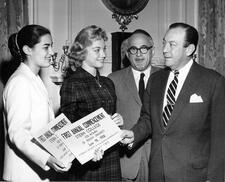
Orthodox Judaism in the United States
Orthodox views on the roles women may play in their communities’ religious, educational, and social life have reflected the range of attitudes that religious group has harbored toward American society. Generally, those Orthodox Jews who have resisted American culture have not countenanced the active participation of women within the synagogue. For other Orthodox Jews, the opening of synagogue life to greater women’s participation, within what they see as the expansive boundaries of halakhah, is but another dimension of their accommodating approach to their encounter with America.
Rabbi Ben-Zion Meir Hai Ouziel
Rabbi Ben-Zion Hai Ouziel was the Sephardic chief rabbi of Israel. Ouziel believed women could vote and be elected, serve as judges, use birth control for health reasons, and inherit property. He proposed a marriage formula that would prevent women from becoming agunot (“chained”).
Post-Biblical and Rabbinic Women
IIn antiquity, the treatment of women drew from patriarchal biblical traditions. Despite a few notable exceptions, women had minimal legal rights but were active participants in alternative Jewish sects and could hold office. As rabbinic material was codified, control over women increased, although the literature was not exclusively restrictive towards women.
Qumran
Whether or not women were a part of the Essenes’ Qumran settlement, they do appear in Qumran literature. Women in the halakhic writing are only discussed when there are explicit rulings about women’s issues. Halakhic literature shows that women were excluded from all facets of public life and generally were subject to strict halakhic rulings.

Rashi
The medieval commentator Rashi, through his commentary and halakhic works, was an advocate for improving the status of women, introducing innovative exegesis to support his views. His followers, the Tosafists, would continue to innovate and support Jewish women.


